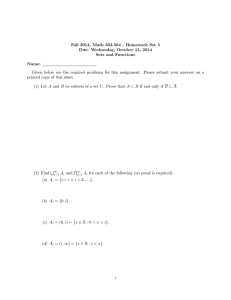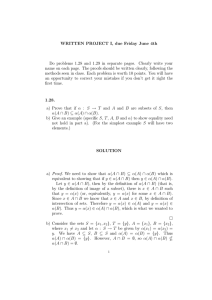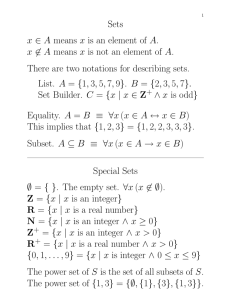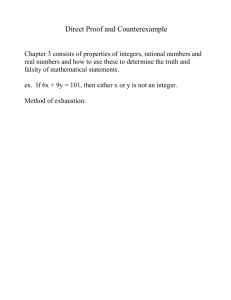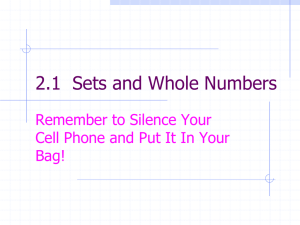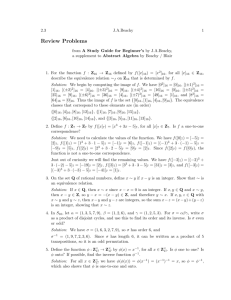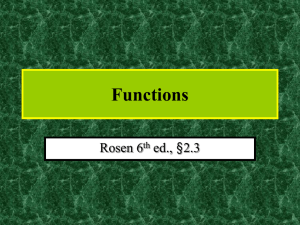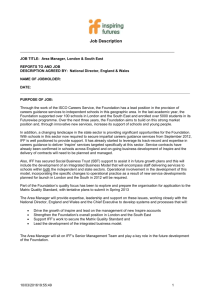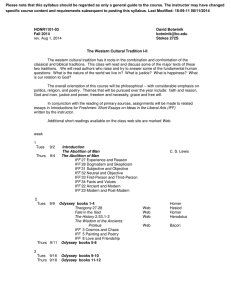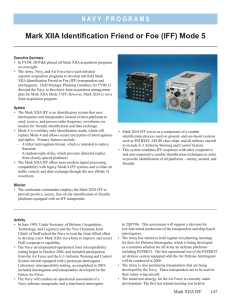Math 111 Practice Midterm III Ch. 6
advertisement
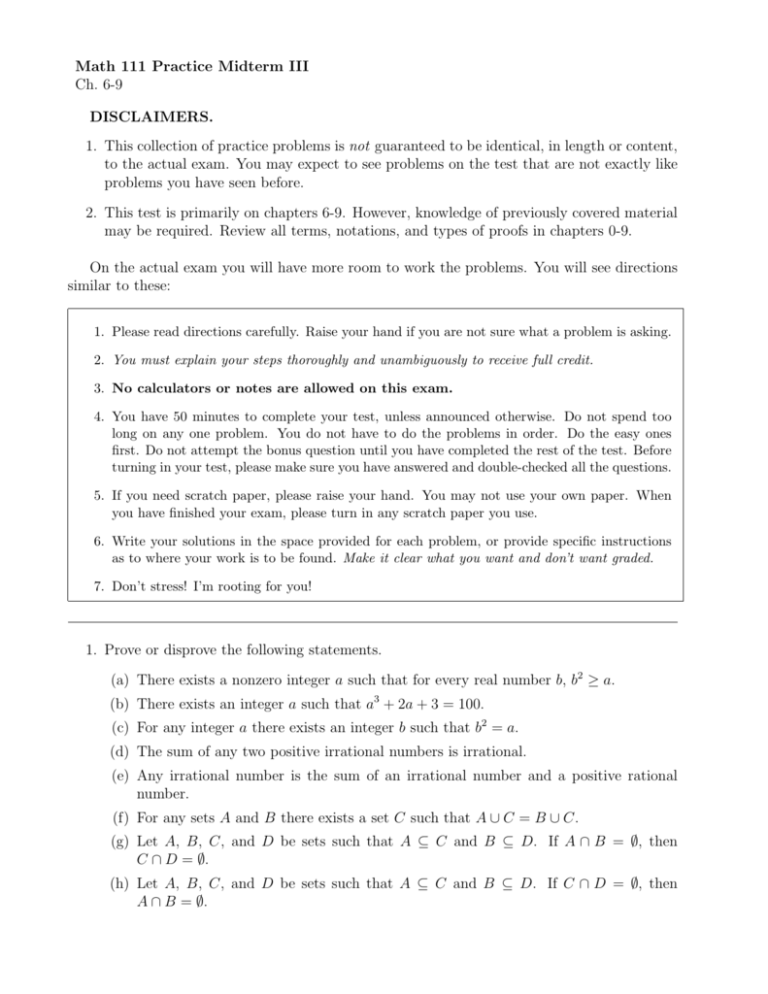
Math 111 Practice Midterm III
Ch. 6-9
DISCLAIMERS.
1. This collection of practice problems is not guaranteed to be identical, in length or content,
to the actual exam. You may expect to see problems on the test that are not exactly like
problems you have seen before.
2. This test is primarily on chapters 6-9. However, knowledge of previously covered material
may be required. Review all terms, notations, and types of proofs in chapters 0-9.
On the actual exam you will have more room to work the problems. You will see directions
similar to these:
1. Please read directions carefully. Raise your hand if you are not sure what a problem is asking.
2. You must explain your steps thoroughly and unambiguously to receive full credit.
3. No calculators or notes are allowed on this exam.
4. You have 50 minutes to complete your test, unless announced otherwise. Do not spend too
long on any one problem. You do not have to do the problems in order. Do the easy ones
first. Do not attempt the bonus question until you have completed the rest of the test. Before
turning in your test, please make sure you have answered and double-checked all the questions.
5. If you need scratch paper, please raise your hand. You may not use your own paper. When
you have finished your exam, please turn in any scratch paper you use.
6. Write your solutions in the space provided for each problem, or provide specific instructions
as to where your work is to be found. Make it clear what you want and don’t want graded.
7. Don’t stress! I’m rooting for you!
1. Prove or disprove the following statements.
(a) There exists a nonzero integer a such that for every real number b, b2 ≥ a.
(b) There exists an integer a such that a3 + 2a + 3 = 100.
(c) For any integer a there exists an integer b such that b2 = a.
(d) The sum of any two positive irrational numbers is irrational.
(e) Any irrational number is the sum of an irrational number and a positive rational
number.
(f) For any sets A and B there exists a set C such that A ∪ C = B ∪ C.
(g) Let A, B, C, and D be sets such that A ⊆ C and B ⊆ D. If A ∩ B = ∅, then
C ∩ D = ∅.
(h) Let A, B, C, and D be sets such that A ⊆ C and B ⊆ D. If C ∩ D = ∅, then
A ∩ B = ∅.
2. Let A = {1, 2, 3, 4} and B = {a, b, c}. Which of the following are relations from A to B or
relations from B to A? Which of them are functions?
(a) {(a, 1), (b, 2), (c, 3)}
(b) {(1, b), (1, c), (3, a), (4, b)}
3. Determine which of the following relations are reflexive; symmetric; transitive. Which
of them are equivalence relations? For those that are, describe the distinct equivalence
classes.
(a) Relation R on set Z defined by (a, b) ∈ R iff a + b = 0.
a
(b) Relation R on set R defined by (a, b) ∈ R iff ∈ Q.
b
(c) Relation R on set R defined by (a, b) ∈ R iff ab > 0.
(d) Relation R on set Z defined by (a, b) ∈ R iff a ≡ b (mod 3).
(e) Relation R on set Q defined by (a, b) ∈ R iff a > b.
4. Determine which of the following functions are one-to-one; onto; bijective.
(a) f : Z → Z defined by f (n) = 5n2 + 2.
1
(b) f : N → R defined by f (n) = .
n
1 if x 6= 0
(c) f : R → R defined by f (x) = x
0 if x = 0.
(d) f : R → R defined by f (x) = x3 − x.
5. Prove or disprove the following statements.
(a) Let f : A → B and g : B → C be two functions. If g is onto, then g ◦ f is onto.
(b) Let f : A → B and g : B → C be two functions. If both g and g ◦ f are one-to-one,
then f is one-to-one.
(c) Let f : A → B and g : B → C be two functions. If both f and g ◦ f are one-to-one,
then g is one-to-one.
6. Use mathematical induction to prove the following statements.
(a) Let n ∈ N. Then 1 · 2 + 2 · 3 + 3 · 4 + ... + n(n + 1) =
(b) Let n ∈ N. Then 5 | (n5 − n).
Some kind of BONUS.
n(n + 1)(n + 2)
.
3

